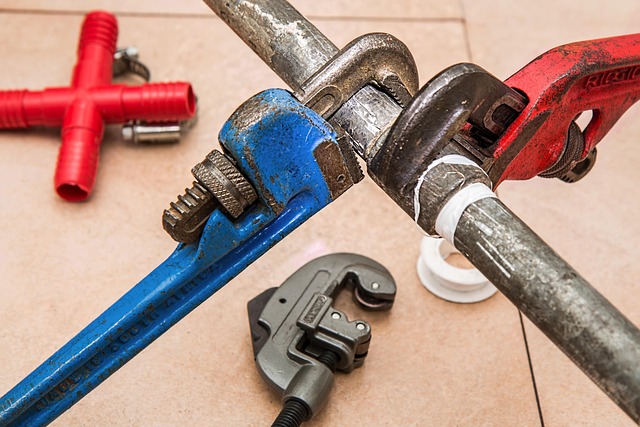Low water pressure, caused by factors like outdated plumbing, mineral buildup, corroded fittings, and faulty meters, hampers daily tasks, reduces efficiency, and may lead to higher bills. Regular maintenance, including visual inspections for clogs, pipe damage, or unusual signs, is vital. Preventing clogs through proper disposal, drain covers, and natural cleaners, along with regular plumbing checks, ensures optimal water pressure and avoids system breakdowns.
Low water pressure can be frustrating, disrupting daily routines from showering to cooking. Understanding the causes of this issue is the first step towards resolution. This article delves into one of the primary culprits: clogged pipes and fittings. We’ll guide you through visual inspection techniques, highlighting common problem areas like kitchens and bathrooms. Additionally, discover prevention and maintenance tips to keep your plumbing flowing smoothly, avoiding future low water pressure headaches.
- Understanding Low Water Pressure: Causes and Effects
- Visual Inspection: Identifying Clogged Pipes or Fittings
- Common Areas for Clogs: Kitchen and Bathroom Focus
- Prevention and Maintenance Tips for Clear Pipes
Understanding Low Water Pressure: Causes and Effects

Low water pressure is a common issue that can greatly disrupt your daily routines, from taking a shower to running household appliances. Understanding its causes is crucial in addressing the problem effectively. Several factors contribute to low water pressure, including outdated plumbing systems, mineral buildup in pipes (like calcium and magnesium), corroded or damaged fittings, and even faulty water meters. These issues can restrict water flow, leading to reduced pressure at fixtures.
The effects of low water pressure are multifaceted. It not only makes daily tasks more challenging but also impacts water efficiency. Low pressure may indicate an underlying problem that, if left unaddressed, could result in significant damage or increased water bills. Identifying the root cause is essential; it could involve checking for clogs, inspecting pipes and fittings for damage or corrosion, or even testing for leaks within the plumbing system. Regular maintenance and timely repairs are key to maintaining optimal water pressure levels.
Visual Inspection: Identifying Clogged Pipes or Fittings

Performing a visual inspection is often the first step in identifying clogged pipes or fittings. Check for any visible signs of debris, such as hair, grease, or mineral deposits, which can accumulate and obstruct water flow. Look for unusual markings on walls or floors near fixtures, indicating potential leaks caused by clogs. In areas with low water pressure, clogs are a common culprit, so pay close attention to faucets and showerheads that drip or have reduced flow.
Examine pipes for any visible damage or corrosion, as these can lead to blockages. Fittings like valves and joints should be free from rust and debris. If you notice any discolouration or odd odours coming from drains or pipes, it could signal a clog. Regular visual inspections allow for prompt identification and resolution of issues, preventing low water pressure and ensuring smooth plumbing operation.
Common Areas for Clogs: Kitchen and Bathroom Focus

Clogged pipes are a common household issue, often leading to low water pressure in your kitchen and bathroom. These areas are particularly prone to obstructions due to the high volume of waste generated daily. In the kitchen, food debris, grease, and cooking oil can accumulate in drains, especially if not disposed of properly. The sink, dishwasher, and garbage disposal units are common spots for clogs. Similarly, bathrooms present their unique challenges with hair, toilet paper, and personal care products frequently causing blockages in sinks, tubs, and toilets. Regular cleaning and maintenance, including the use of drain covers and regular plumbing inspections, can help prevent these obstructions.
Prevention and Maintenance Tips for Clear Pipes

Regular maintenance is key to preventing clogged pipes and keeping your plumbing system running smoothly. Start by ensuring proper drainage after each use—never let excess water sit in sinks, tubs, or showers. This simple step goes a long way in preventing hair, soap scum, and other debris from accumulating over time. Additionally, install strainers on drains to catch larger particles before they enter the pipes.
For ongoing care, consider using natural cleaning solutions like baking soda and vinegar, which are effective at breaking down clogs without harsh chemicals. Schedule regular plumbing check-ups with a professional to inspect for any signs of wear or damage in your pipes and fittings. Addressing potential issues early can prevent low water pressure caused by clogged or damaged components, ensuring your plumbing system remains efficient and reliable.
